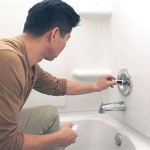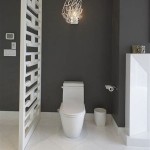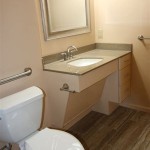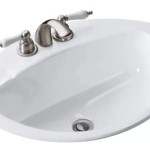Bathroom Exhaust Fan Through Roof or Wall: A Comprehensive Guide
Ensuring proper ventilation in a bathroom is crucial for maintaining a healthy and comfortable environment. Bathroom exhaust fans play a vital role in removing moisture, odors, and pollutants, preventing the growth of mold and mildew, and improving air quality. When choosing an exhaust fan for your bathroom, a significant decision is whether to install it through the roof or the wall. This article will delve into the pros and cons of each installation method to help you determine the best option for your specific needs.
Roof Installation
Installing a bathroom exhaust fan through the roof offers several advantages, particularly for bathrooms located on the top floor of a building.
Pros:
- Improved Ventilation: Roof-mounted fans typically have a longer exhaust path, resulting in more efficient airflow and better ventilation. The exhaust air is released directly into the open air, minimizing the potential for recirculation within the house.
- Reduced Noise: Since the fan is further away from the living spaces, the noise it produces can be less noticeable. This is particularly beneficial if the bathroom is close to bedrooms or other areas where noise sensitivity is a concern.
- Easier Access: For maintenance or cleaning, roof-mounted fans are often easier to access, especially if the roof is flat or has a gentle pitch.
Cons:
- Higher Installation Costs: Installing a roof-mounted fan requires cutting a hole in the roof, which can be more complex and labor-intensive than wall installation, potentially increasing the cost of installation.
- Potential for Leaks: If the installation is not performed correctly, there is a risk of leaks, especially during heavy rain or snow. Proper flashing and sealing techniques are crucial to prevent water damage.
- Aesthetics: Some people find the appearance of a roof-mounted fan to be aesthetically unappealing, especially if it is visible from the ground or a neighboring property.
Wall Installation
Installing a bathroom exhaust fan through the wall is a common and often simpler option. It is generally suitable for bathrooms situated on any floor of a building.
Pros:
- Lower Installation Costs: Installing a wall-mounted fan is typically less expensive and requires less work compared to roof installation, as it involves cutting a hole in the wall instead of the roof.
- Easier Installation: Due to the simpler installation process, homeowners with basic DIY skills can often install a wall-mounted fan themselves, saving on labor costs.
- Less Potential for Leaks: Wall-mounted fans are generally less susceptible to leaks as the installation is not directly exposed to the elements. However, proper sealing around the fan is still crucial to prevent moisture from entering the bathroom.
Cons:
- Reduced Ventilation: Compared to roof-mounted fans, wall-mounted fans may have a shorter exhaust path, leading to potentially less efficient ventilation. There is also a higher risk of the exhaust air being recirculated within the house, especially if the vent is near windows or doors.
- More Noise: Since the fan is closer to living spaces, the noise it produces may be more noticeable. This can be a concern for bathrooms located near bedrooms or other quiet areas.
- Limited Access: For maintenance or cleaning, wall-mounted fans may be harder to access, especially if they are located behind fixtures or in a tight space.
Factors to Consider When Choosing Installation Method
When deciding whether to install a bathroom exhaust fan through the roof or the wall, several factors should be considered:
- Bathroom Location: The location of the bathroom relative to the roof, the exterior walls, and other rooms will significantly influence the best installation method.
- Noise Sensitivity: If noise is a major concern, a roof-mounted fan may be preferable. However, if the bathroom is relatively isolated, a wall-mounted fan might be sufficient.
- Budget: Consider the cost of installation, which can vary significantly depending on the method chosen, the complexity of the installation process, and the materials required.
- Aesthetics: The appearance of the fan and its installation method may be a deciding factor for some homeowners. Consider the impact of the fan on the overall aesthetics of the house, especially if it is visible from the outside or the surrounding areas.
- Building Code Requirements: Local building codes may specify certain requirements for the installation of bathroom exhaust fans, such as the minimum size and type of fan, the location of the exhaust outlet, and the required length of the exhaust duct.
Ultimately, the best installation method for your bathroom exhaust fan depends on your individual needs and preferences. Carefully consider the factors listed above and consult with a qualified contractor or HVAC professional to discuss the most suitable option for your specific situation.

Bathroom Exhaust Fan Can Vent Out Through The Wall Or Up Roof Building America Solution Center

Venting A Bath Fan In Cold Climate Fine Homebuilding

Bath Vent Fan Exhaust Placement Under Gable Overhang Or Thru Shallow Pitched Roof Greenbuildingadvisor

How To Vent A Bath Fan Through The Roof This Old House

Quick Tip 23 Fixing A Drip At The Bathroom Fan Misterfix It Com

Best Practices Bathroom Venting Greenbuildingadvisor

Bathroom Exhaust Fans The Complete Guide By Fanco

What Extractor Fan Do I Need For My Bathroom Blog World

Air Sealing Bathroom And Kitchen Exhaust Fans Building America Solution Center

Bathroom Vent Piping To Near Exterior Inspecting Hvac Systems Internachi Forum
Related Posts







